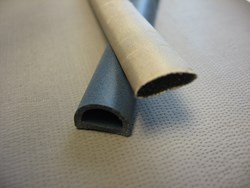
Doug Sharpe
President of Elasto Proxy
Have you ever wondered why you’re not allowed to use your cell phone on an airplane or in a hospital? It’s because cell phones produce electromagnetic fields that can interfere with avionics and medical equipment. If electromagnetic interference (EMI) disrupts in-flight communications, a pilot may not be able to receive radio transmissions from an air traffic control tower. EMI can also endanger patients in hospitals, where it can cause medical devices such as ventilators or heart monitors to malfunction.
EMI can be so powerful that defense and security experts worry about its intentional use by criminals, hackers, and terrorists. Electronic jamming isn’t new, but the proliferation of wireless devices and electronic communications increases our vulnerability. Preventing inadvertent or intentional EMI from disrupting electronic communications can’t be an afterthought in the design process. After all, ensuring electromagnetic compatibility (EMC) could mean the difference between life and death.
Metal Enclosures and More
When designing electronic devices, manufacturers must follow regulations for preventing EMI and RFI, a form of EMI in the radio frequency (RF) part of the electromagnetic spectrum. By using EMI shielding, electronic designers can reduce – or attenuate – this interference. Through a combination of reflection and absorption, EMI shielding opposes the invisible waves of electromagnetic energy that can cause communication failures. EMI shields were once almost exclusively metal, but have evolved over time.
Back in the days of Bell Telephone, technicians maintained grounded cabinets made with beryllium fingers. These metal enclosures protected sensitive components from outside interference while containing electronic emissions. Buyers of EMI shielding also opted for wire mesh made of different metals, and that included elastomeric cores made of tubing or sponge-like materials. These cores supported the metal mesh during installation and helped it to retain its shape.
During the 1980s, product designers began to use loaded materials – silicones with metal inside. EMI shielding also evolved as more applications required lower-cost, lighter-weight, and easier-to-produce solutions. Metal enclosures made of aluminum, steel, nickel, and nickel-iron alloys are highly effective against EMI, but cost more than lighter-weight thermoplastics that are produced with injection molding rather than metal stamping.
Thermoplastic Enclosures and Conductive Coatings
Plastic products alone cannot provide adequate EMI protection, however. Because plastic materials are electrically insulating, internal electric charges do not flow freely. To overcome this inherent condition, conductive coatings are applied, often through electroless plating. This labor-intensive chemical process deposits a thin layer of metal onto the plastic after the substrate is exposed to solvent, etched with acid and rinsed, and a catalyst is applied.
Although electroless plating remains popular, concerns about production costs, worker safety, and the environment are causing some companies to choose other coatings instead. Made with a thermoplastic or thermosetting resin, these alternative coatings are loaded with metallic particles like silver, copper, or nickel. Instead of filling or loading the plastic part with metal then, conductive material is applied to the part’s surface (as with electroless plating).
Highly-conductive epoxy coatings for thermoplastic enclosures are another choice for EMI shielding. Lightweight and self-assembling, these polymeric coatings provide resistance to high temperatures, humidity, and marine environments. Unlike traditional coatings, they are available as adhesives and films. Highly-conductive epoxy coatings can be sprayed onto plastic parts with consistent coverage, but without the cost, safety, and environmental drawbacks associated with electroless plating.
How Can We Help You?
For over 20 years, Elasto Proxy has supplied sealing solutions to a wide variety of industries, including military, medical, and marine applications. To outfit our partners with an environmental seal that provides EMI shielding, we’ve custom-fabricated high-quality silicone profiles with wire mesh. Our experience with EMI shielding also includes working with defense contractors on sealing solutions for mobile military communications centers that must resist electronic jamming.
How can we help you? Let’s talk about EMI shielding. Join the conversation. Look for my post with a link to this blog entry on LinkedIn, Facebook, Google+, and Twitter. Elasto Proxy has pages on all of these social media websites, so all that’s missing is you! I also hope you’ll subscribe to our free e-newsletters, too. They’re a great source of information delivered right to your email inbox.








